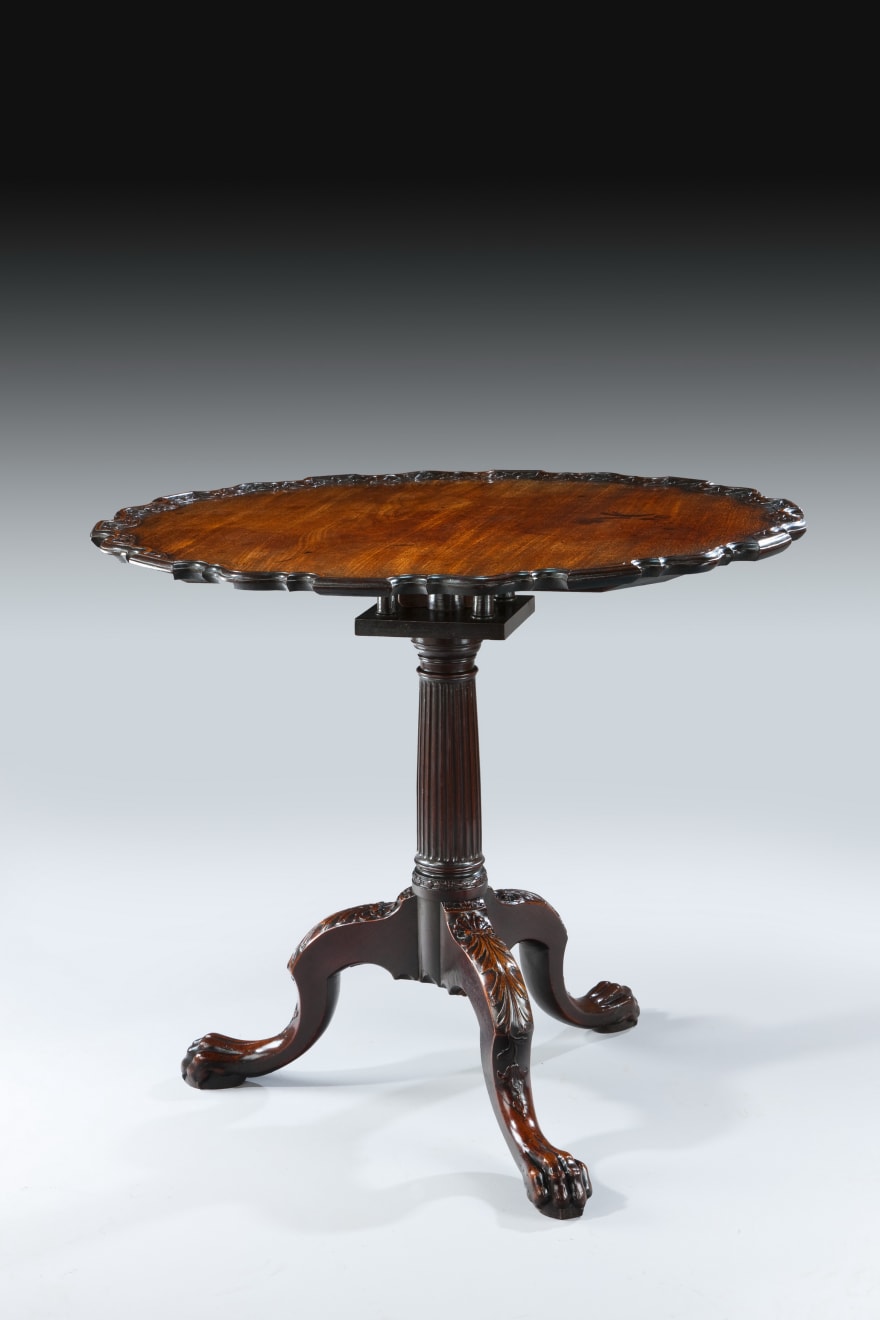George II Mahogany Tripod Supper Table
ENGLAND, circa 1755
28 3/4 x 32 5/8 x 32 5/8 in
73 x 83 x 83 cm
73 x 83 x 83 cm
5702
Further images
Provenance
Property of L. Fleischmann, Esq. c. 1906. Sold Grosvenor House Antiques Fair, 1982. Private Collection.Literature
Illustrated in ‘The Age of Mahogany’ in Percy Macquoid, ‘A History of English Furniture: The Age of Mahogany and The Age of Satinwood: Volume II’ (Antique Collectors’ Club, 1987), p.238, Fig. 222
The shaped circular top with carved pie-crust edge incorporating foliate carving on a birdcage support with turned and fluted stem on three carved cariole legs terminating in claw and ball...
The shaped circular top with carved pie-crust edge incorporating foliate carving on a birdcage support with turned and fluted stem on three carved cariole legs terminating in claw and ball feet.
Percy Macquoid describes the table as: ‘a very practical and steady shape of tripod table; the top is of undulating and escaloped form, with a raised ribbon edge, and is supported on five short columns resting on a platform.’ (‘The Age of Mahogany’ in Percy Macquoid, ‘A History of English Furniture: The Age of Mahogany and The Age of Satinwood: Volume II’ (Antique Collectors’ Club, 1987), p.241.)










